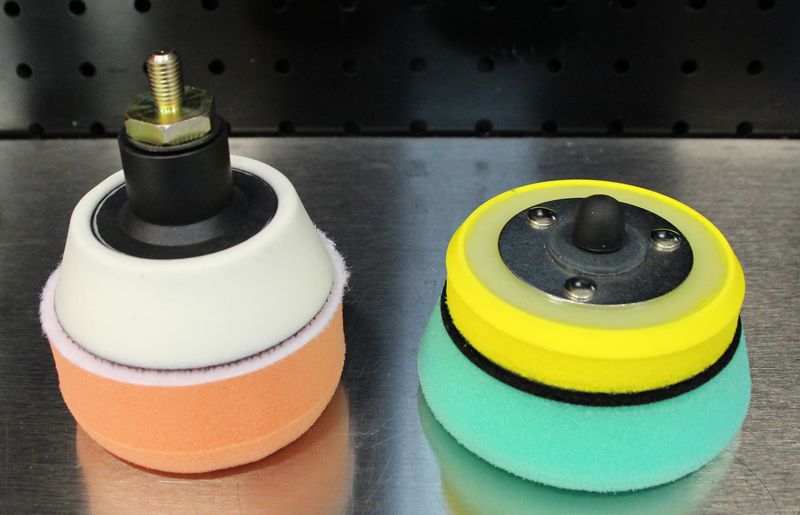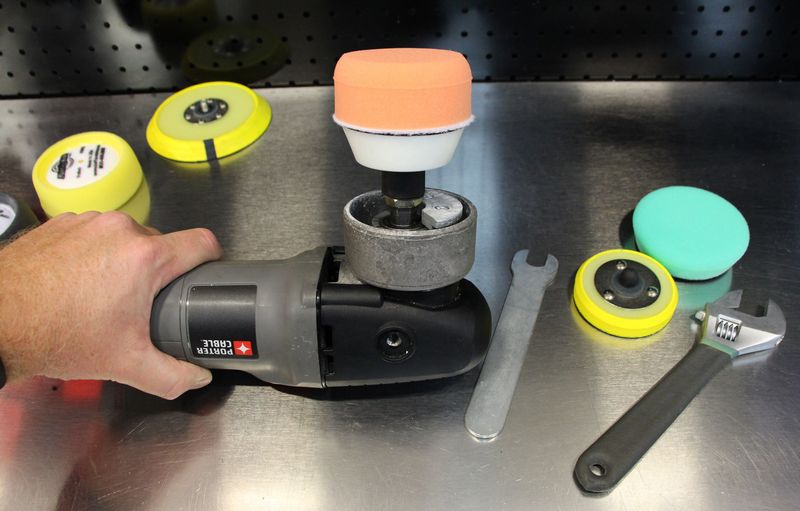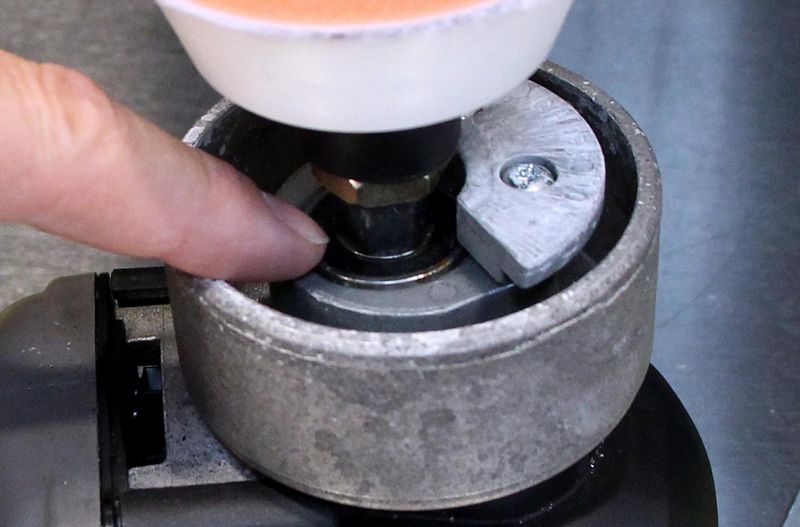Mike Phillips
Active member
- Dec 5, 2022
- 51,004
- 6
Small pads on large orbital polishers
There's been a few questions on the forum lately about using smaller pads on full size traditional dual action polishers so here's a few pictures to give you an idea what this looks like.
Of course the words small and large can be subjective depending upon which polishers you own but for the most part I'm talking about using pads 4" in diameter and smaller on full size orbital polishers like the Porter Cable 7424XP and the Griot's Garage 6" DA Polisher.
I have a project car coming into Autogeek's Show Car Garage tomorrow for some work on Wednesday and I'll take some pictures to show you how handy it can be to have a dedicated polisher setup to use smaller pads.
Here's some pictures to show you to approaches...
Here's a 3" flexible rotary buffer backing plate with a DA polisher adapter on a 3" Lake Country Foam Pad and to the right of it is a 3" DA backing plate on a Flex 3" foam buffing pad.

If using the adapter make sure you tighten it into the rotary buffer backing plate till it's snug.

Then tighten the adapter into the spindle using the PC wrench.

Here's how it will look when you're done.

Here's the safety concern with this approach, the housing is now open and you could accidentally get your fingers into where the counterweight is spinning so if you ever use this approach be careful.


With this approach you have the length of the adapter and the thickness of the rotary buffer backing plate which when bolted together increases the distance between the tool and the face of the pad. This is no big deal as long as you pay attention and hold the tool firmly. If you're not paying attention and are using the weight of the tool you may find this set-up to be tippy.
As long as you hold the tool firmly and focus on the task at hand it won't be an issue.

Using the 3" DA Backing plate keeps the pad closer to the body of the tool and eliminates the safety concern and makes for a smoother buffing experience with less of the tippy factor.


There's been a few questions on the forum lately about using smaller pads on full size traditional dual action polishers so here's a few pictures to give you an idea what this looks like.
Of course the words small and large can be subjective depending upon which polishers you own but for the most part I'm talking about using pads 4" in diameter and smaller on full size orbital polishers like the Porter Cable 7424XP and the Griot's Garage 6" DA Polisher.
I have a project car coming into Autogeek's Show Car Garage tomorrow for some work on Wednesday and I'll take some pictures to show you how handy it can be to have a dedicated polisher setup to use smaller pads.
Here's some pictures to show you to approaches...
Here's a 3" flexible rotary buffer backing plate with a DA polisher adapter on a 3" Lake Country Foam Pad and to the right of it is a 3" DA backing plate on a Flex 3" foam buffing pad.

If using the adapter make sure you tighten it into the rotary buffer backing plate till it's snug.

Then tighten the adapter into the spindle using the PC wrench.

Here's how it will look when you're done.

Here's the safety concern with this approach, the housing is now open and you could accidentally get your fingers into where the counterweight is spinning so if you ever use this approach be careful.


With this approach you have the length of the adapter and the thickness of the rotary buffer backing plate which when bolted together increases the distance between the tool and the face of the pad. This is no big deal as long as you pay attention and hold the tool firmly. If you're not paying attention and are using the weight of the tool you may find this set-up to be tippy.
As long as you hold the tool firmly and focus on the task at hand it won't be an issue.

Using the 3" DA Backing plate keeps the pad closer to the body of the tool and eliminates the safety concern and makes for a smoother buffing experience with less of the tippy factor.
